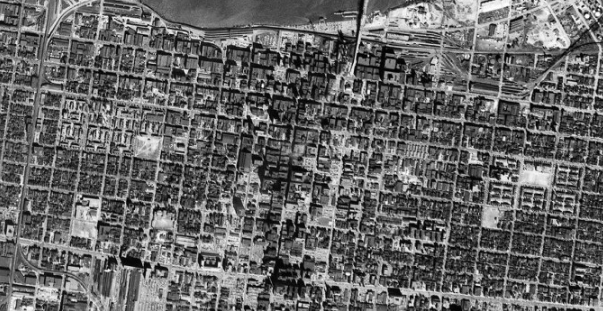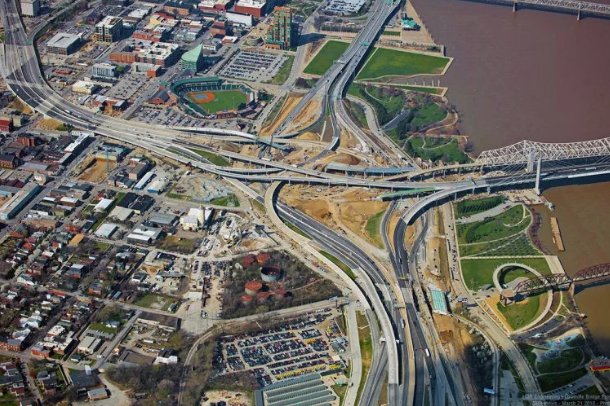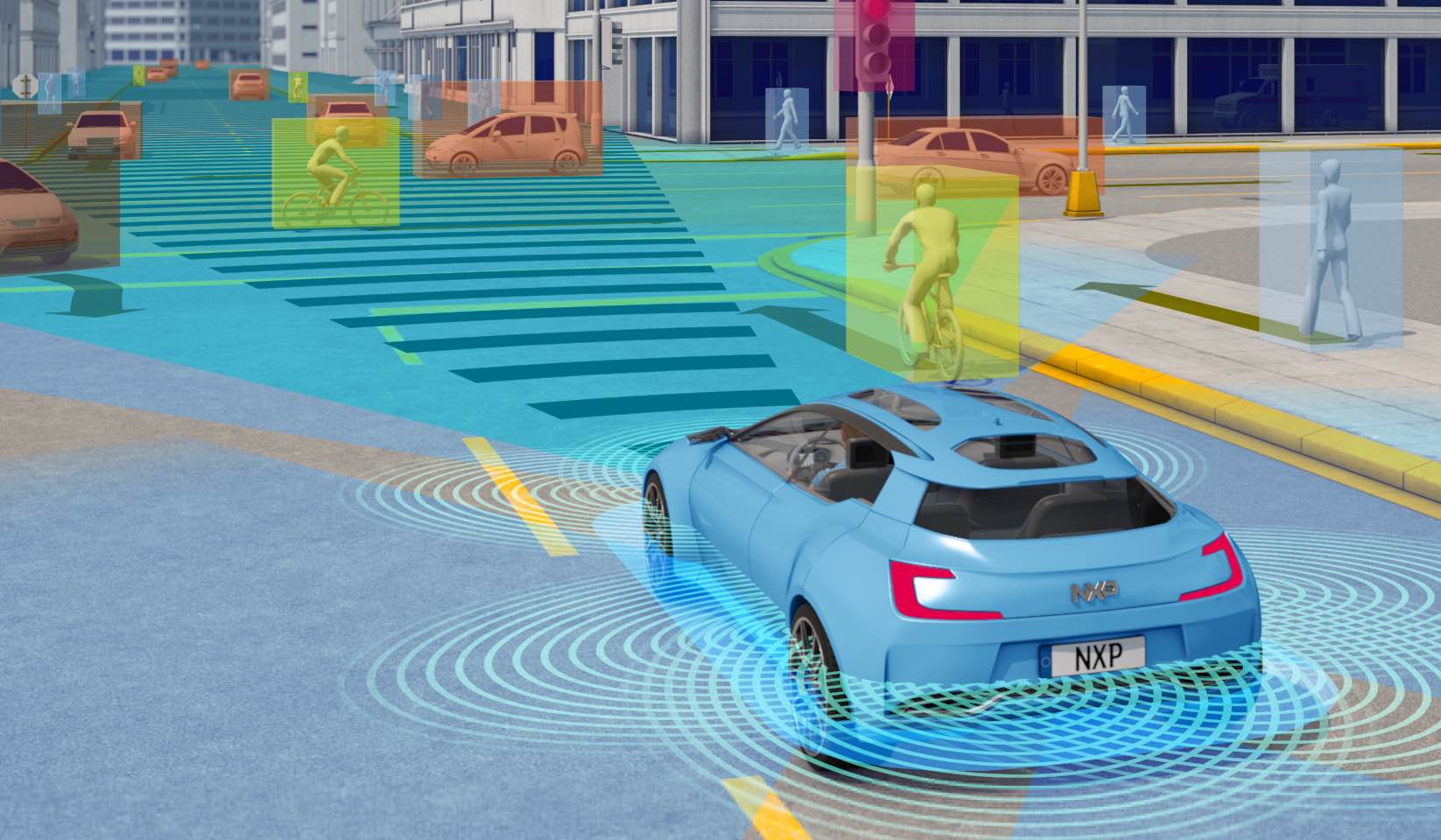Last week, Louisville cut the ribbon on the $2.6 billion "Ohio River Bridges Project" -- a highway expansion that includes a gargantuan new interchange between downtown and the riverfront, known as Spaghetti Junction.
The project was immediately held up as an example of outdated transportation thinking. Not only was the interchange outrageously expensive, it has marred an enormous swath of downtown and severed access to the waterfront for at least another generation.
The project wiped out 30 storefronts -- get those taxpaying businesses out of the way -- in disadvantaged neighborhoods, Vox reports. Construction also consumed 33 acres of forest around the region, according to the Courier Journal, an area twice the size of Central Park. But to "soften" the "hard edges" of the enormous structure, the paper reported, some 580 trees will be planted around it. (How green!)
It's all the more upsetting when you consider what might have been. A grassroots proposal to tear down a portion of the old highway and replace it with a park garnered considerable support, but was ultimately dismissed by local elected officials. Here's a rendering of the park and esplanade that the teardown would have made possible.
Louisville threw all that away to shave a few minutes off long-distance car commutes.
The city has been making the same mistakes for 60 years. Here's a look at central Louisville in 1942, before it was criss-crossed by highways, courtesy of local blog Broken Sidewalk:

And here is Louisville with its present complement of highways and parking lots. It's a tragedy that this is still happening to cities.
Other good reads today: Urban Review STL says that rather than pouring millions of dollars into a soccer stadium, St. Louis would be better off using the money to clear the way for development at the site of a decommissioned highway. And Bike Portland reports that outgoing mayor Charlie Hales used his final public remarks to criticize Oregon DOT and car culture.






